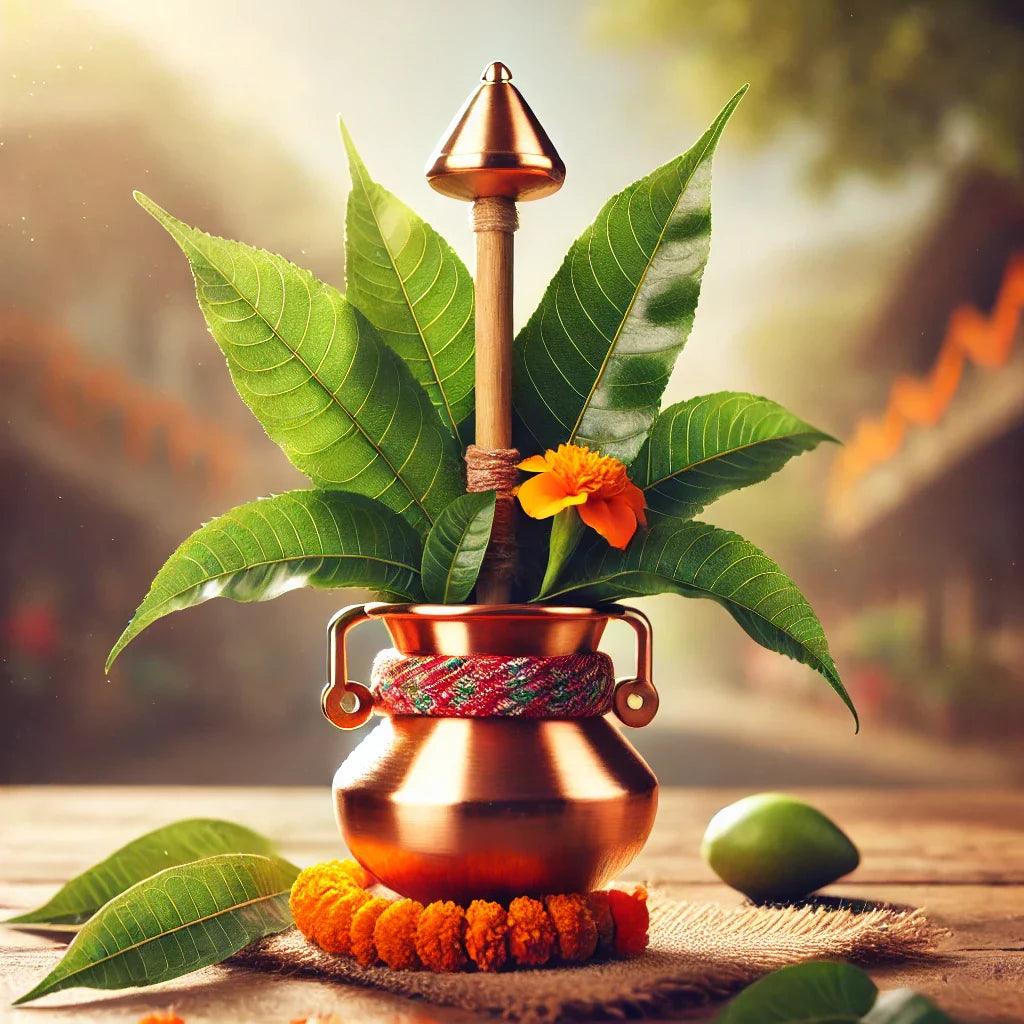
Gudi Padwa 2025: Traditions, Puja & Festival Meaning
Share
Gudi Padwa is one of the most vibrant and spiritually significant Hindu festivals celebrated in Maharashtra, marking the beginning of the Hindu lunar calendar. It’s not just the start of a new year but also a celebration of prosperity, tradition, and victory of good over evil.
Whether you’re exploring Indian culture or planning to celebrate for the first time, this guide breaks down everything about Gudi Padwa—why it's celebrated, when it's celebrated, how the rituals are performed, and who celebrates it.
What is Gudi Padwa and Why is it Celebrated?
Gudi Padwa (also spelled Gudhi Padwa) is the Maharashtrian New Year, celebrated on the first day of the Chaitra month, which falls in March or April. In 2025, Gudi Padwa falls on March 30.
Significance of Gudi Padwa:
- Marks the start of the Hindu lunisolar calendar year.
- Symbolizes Lord Brahma’s creation of the universe, as per Hindu scriptures.
- Celebrates Lord Rama’s return to Ayodhya after defeating Ravana.
- Honors the victories of Chhatrapati Shivaji Maharaj, who hoisted the Gudi as a mark of triumph.
The Gudi (a flag-like emblem raised outside homes) represents victory, success, and positive energy, making this day perfect for new beginnings.
When is Gudi Padwa Celebrated?
Gudi Padwa is celebrated on Chaitra Shukla Pratipada, the first day after the new moon in the Hindu month of Chaitra. It usually falls in late March or early April.
Gudi Padwa 2025 date: Sunday, March 30, 2025
This day also coincides with Ugadi in Karnataka and Andhra Pradesh, Cheti Chand for Sindhis, and marks the start of Chaitra Navratri in North India.
How to Celebrate Gudi Padwa at Home – Step-by-Step Rituals
Celebrating Gudi Padwa involves a blend of cleaning rituals, traditional puja, and festive decorations. Here's a step-by-step guide on how to perform Gudi Padwa rituals at home:
- Clean and Decorate the Home - Begin the day by thoroughly cleaning the house. Decorate the entrance with colorful rangoli designs and fresh flowers.
- Oil Bath - Take an auspicious oil bath early in the morning.
- Hoisting the Gudi -The Gudi is a bamboo stick decorated with a bright silk cloth (usually yellow or saffron), an inverted copper or silver kalash on top and garlanded with neem leaves, mango leaves, and sugar crystals (gaathi). The Gudi is hoisted outside the house, often on the right side of the door or balcony.
- Gudi Padwa Puja (Worship) - Perform a simple Gudi Padwa puja with haldi-kumkum, incense, and lamps. Offer neem-jaggery mix, coconut, and traditional sweets to the Gudi. Chant devotional mantras and perform aarti.
- Traditional Foods for Gudi Padwa - Gudi Padwa is incomplete without its special festive dishes, the neem and jaggery chutney – symbolizes life’s bittersweet nature. Shrikhand with puri, Puran Poli, Kothimbir vadi, Soonth panak (ginger drink) etc. These dishes are not only delicious but are rooted in Ayurveda and traditional seasonal wisdom. Shop Pooja Samagri
Who Celebrates Gudi Padwa?
Gudi Padwa is primarily celebrated by Maharashtrian Hindus, but its influence and rituals are also observed by the Konkani and Goan communities, the Marathi-speaking people across India and abroad and Hindu spiritual seekers who follow the lunar calendar. Even in urban cities like Mumbai and Pune, the streets come alive with processions, traditional music, Lezim dance, and folk performances.
Symbolism Behind the Gudi:
- Silk cloth: Prosperity, vibrancy
- Kalash (pot): Victory and protection
- Neem leaves: Detox, protection from illness
- Sugar crystals: Sweetness in life
-
Hoisting the Gudi: Raising a flag of spiritual triumph
❓ Frequently Asked Questions (FAQs)
Q1: What is the meaning of Gudi Padwa?
It is the Hindu New Year in Maharashtra, celebrating new beginnings, prosperity, and victory.
Q2: What is the significance of neem and jaggery on Gudi Padwa?
The mix of neem and jaggery represents the bitter and sweet experiences of life. It’s also known for cleansing and immunity.
Q3: Can non-Maharashtrians celebrate Gudi Padwa?
Absolutely! It’s a festival open to all Hindus and spiritual practitioners, especially those following the lunar calendar.
Q4: Is there any mantra to chant during Gudi Padwa puja?
You can chant Durga mantras, Navratri stutis, or simply “Om Devi Durgaaye Namah” while doing the aarti.
Final Thoughts
Gudi Padwa is much more than a cultural festival — it’s a spiritual reset button. With its mix of sacred rituals, symbolic meanings, and community joy, it encourages us to embrace positivity, gratitude, and growth.
Whether you’re decorating your Gudi with love or simply sharing sweets with family, you’re participating in a thousand-year-old tradition that still feels fresh and inspiring.
Shop Pooja Samagri